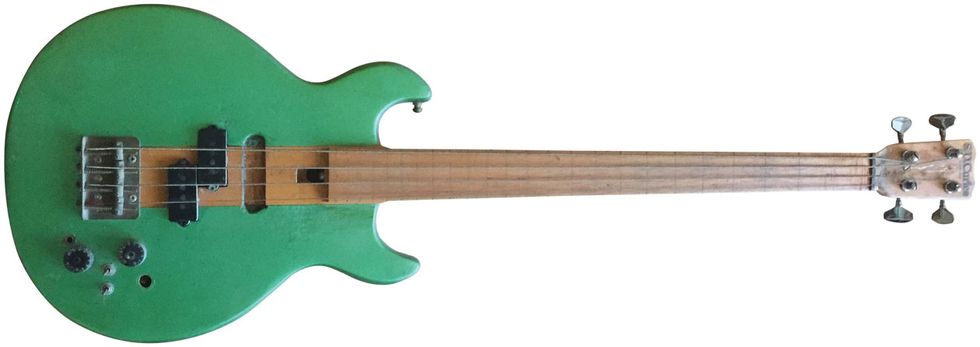The used gear market is full of old, used, and abused basses built by unknown or long-gone manufacturers. Instruments that sell for small money are ideal for a modding project, and they offer a great way to learn more about an instrument's parts—how they function and interact.
I recently checked out a thread about converting a budget bass to a nice, playable bass. The thread opener described some mods a player made on an old, budget bass by spraying the body in a different color, replacing the control knobs, and reshaping the headstock. None of these alterations—with the exception of the unavoidable final setup—have any impact on playability. They're more like a renovation project for a heavily abused bass, and they don't qualify as real “upgrades."
Another pal on the thread who heavily invested in hardware, such as a bridge, pickups, refretting, and miscellaneous parts, got less cheerful reactions from commenters. It goes without saying who ended up with the “better" bass. Unfortunately, in these times of social media, there is all too often a focus on cosmetics. It's pretty easy to discuss taste, but once you talk parts and functionality, you'll not only need to know what's available on the market, but also understand how each change affects the rest of the instrument. A bass is a system of interacting parts, and it takes time and experience to grasp this interaction.
The question comes down to whether you're investing your time and money into a playable instrument or simply a future wall-hanger. Of course, there is nothing wrong with making your gear look pleasing, but most budget basses will need a functionality upgrade. That's why it's imperative to check whether or not an instrument's playability and tone makes it worth a further investment of time and cash in cosmetic upgrades. It's like reengineering the way budget basses are built in the first place: They offer optics to impress at first sight and low-budget parts on all that's hidden. It's the latter that affect adjustability and proper functionality.
A useful starting point is to give a prospective purchase a proper setup, including intonation. It's 30 minutes well spent because a malfunctioning truss rod could mean the end of the project. And by properly working, I mean it's able to get the neck straight. It's not that we need to get a totally straight neck right away, but not being able to do this at some point means the neck won't be working evenly on most of its length. If a bass can't pass this first check, it's on its way to the wall and not worth any further investment. An initial setup will also show if the bridge's adjustability is sufficient, comfortable, and, well, working. With good playability, every low-budget bass can be a keeper, even if it's only relegated to sitting next to your sofa for quick ideas and noodling.
An odd and ugly, yet playable, fretless low-budget bass from the hands of a teenage experimenter.
Cheap electric parts are common with most budget basses—from pots to miserable shielding of both the wiring and pickups—but, again, it will depend on how you want to ultimately use these instruments. Most experienced players typically have one or two more expensive basses for rehearsal, gigs, or recordings, so acquiring an additional cheap instrument can be a great opportunity to experiment and learn. But if you're only going to pimp it out visually, you're moving away from being an active player to a collector.
One of the best things about budget basses is that you don't have to worry about keeping them in original condition. Basses like these typically won't rise in value, yet many can be fun oddities, as you'll see in my column, “Name That Bass."









![Rig Rundown: AFI [2025]](https://www.premierguitar.com/media-library/youtube.jpg?id=62064741&width=1245&height=700&quality=70&coordinates=0%2C0%2C0%2C0)












 Shop Scott's Rig
Shop Scott's Rig

![Rig Rundown: Russian Circles’ Mike Sullivan [2025]](https://www.premierguitar.com/media-library/youtube.jpg?id=62303631&width=1245&height=700&quality=70&coordinates=0%2C0%2C0%2C0)













































